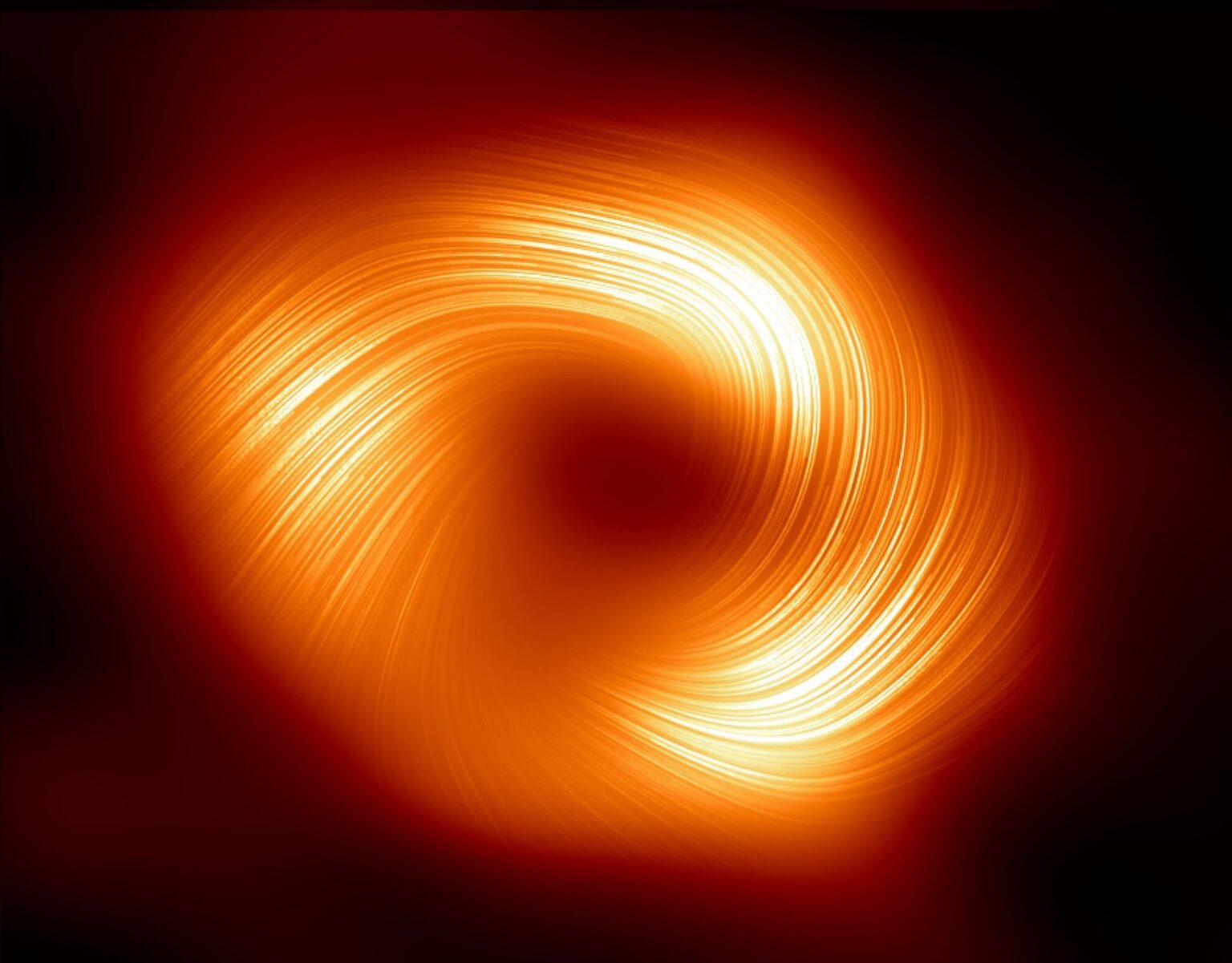The Event Horizon Telescope has received a new image of the supermassive black hole Sagittarius A*, located in the center of our galaxy. Thanks to it, scientists have learned that powerful magnetic fields swirl around this object.

New image of a black hole
Scientists from Harvard and Smithsonian Universities published a study that revealed the fact of the unusual behavior of magnetic fields in the very center of the Galaxy. It was based on a new image of the supermassive black hole Sagittarius A*, obtained by the Event Horizon Telescope.
Previously, this virtual, but very powerful instrument has already received an image of a monster located in the center of the Milky Way at a distance of 27 thousand light-years from us. But then it was fuzzy. The current one allows us to see spiral structures in the accretion disk.
According to scientists, they indicate that there is an extremely powerful magnetic field around Sagittarius A*, which interacts with plasma in the accretion disk. It can also create prerequisites for the existence of powerful jets that we have not yet seen.
Magnetic fields
Previously, the Event Horizon Telescope has already shown scientists something similar. We are talking about the first ever photo of a black hole. Then astronomers studied the monster in the center of the galaxy M87. And the image does show spiral structures, obviously caused by strong magnetic fields.
However, the M87 is almost 1000 times more massive than Sagittarius*A. Therefore, scientists have traditionally thought that the black hole in the center of the Galaxy is very calm. However, now they see similarities between these objects. It seems that extremely powerful magnetic fields are an integral part of them, and they are responsible for the behavior of plasma in the accretion disk.
In this case, magnetic fields strongly polarize the plasma, causing electrons to oscillate in the same plane. Therefore, it is only in polarized light that the spiral structures of the accretion disk can be clearly seen.
New features
The ngEHT expansion will allow the array to create films of supermassive black holes in real time on the scale of the event horizon. These images will help to understand the detailed structure and dynamics near the event horizon, drawing attention to the features of the “strong field” of gravity predicted by general relativity, as well as the interaction of accretion and relativistic jet launch, which forms large-scale structures in the universe.
Meanwhile, the Black Hole Explorer (BHEX) mission concept will spread EHT through space, creating the clearest images in the history of astronomy. BHEX will make it possible to detect and obtain an image of the “photon ring” — a clear ring structure formed by strongly lined radiation around black holes.
The properties of a black hole are reflected in the size and shape of the photon ring, telling scientists about the masses and rotations of dozens of black holes, in turn showing how these strange objects grow and interact with their host galaxies.
According to phys.org
Follow us on Twitter to get the most interesting space news in time
https://twitter.com/ust_magazine


